While most analysis of the ���˿���’s history has been concerned with its cultural and social impact as a creator and broadcaster of radio and television programmes, over the last hundred years there have been many technical innovations that have created ripples far beyond the ���˿��� and helped shape the modern world.
In fact, one way of thinking about the ���˿��� is as a mechanism through which the technologies of radio, television and now the internet are developed and made available to the world in order to improve people’s lives. This is implied in the very first ���˿��� Charter from 1926, which describes the growing importance of broadcasting and then goes on to say: ‘we deem it desirable that the Service should be developed and exploited to the best advantage and in the national interest’. Technical innovation is part of that process.
These technology breakthroughs have contributed to the quality of ���˿��� services and helped the ���˿��� fulfil its mission but they have also shaped the environment within which the ���˿��� and other broadcasters operate and even influenced the internet and online services.
The impact is clearest when it comes to inventions which create new possibilities for creative expression, like better sound, colour, or interactive capabilities, but it also applies to fundamental aspects of broadcasting like outside broadcasting or converting television standards used in other countries to share world events like the Apollo moon landings.
And of course there have been a number of wider-reaching ���˿��� technological innovations, like the ���˿��� Micro and ���˿��� micro:bit, that have an impact that goes far beyond the audiences for their associated television and radio programmes.
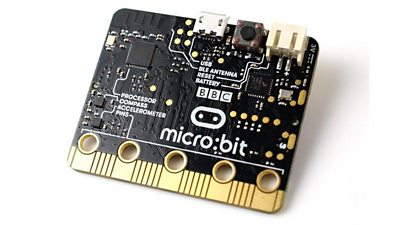
Sound and vision
From the beginning, the ���˿��� was as much an engineering organisation as a programme-maker, and a lot of early effort went into developing the core technologies of radio such as microphones, studios and mixing desks and transmission systems, as radio and television were established. One of the engineers working to deploy these technologies was Harry Routzen, Head of Regional Programing, North in the 1930’s. In this newly-released clip from the ���˿��� Oral History Archive, recorded in 1989, he discusses the problems of getting remote studios working.
Microphones
The ���˿��� was responsible for a number of innovations in microphone technology, often building on the work of others in the early broadcasting industry. In this interview Director of Engineering Harold Bishop discusses studio design and the types of microphones used in the 1920s.
One of the most significant early microphones was the famous lozenge-shaped ���˿��� Marconi Type A “ribbon” microphone. The ribbon microphone was invented by two German engineers in 1924. By 1931 the US broadcaster RCA had created a ribbon microphone called the “Photophone”, largely for use in the rapidly growing film industry, and these were commercially available. However the ���˿��� needed many more microphones than a film set, so the Engineering Research Department designed an alternative.
The first of the Type As was in use by 1935, at a cost of £9 each compared to £130 for the RCA model, and the design continued in use, with various refinements, until the 1950s. Not only did it set a standard for broadcast microphones, its characteristic lozenge shape came to symbolise sound recording and even influences the design of ‘record’ icons on audio software.
Loudspeakers
Another area where the ���˿��� has had significant impact is loudspeaker design. The main reason for this was the need to monitor studio output: as the ���˿��� engineer CD Mathers wrote in 1988 ‘Much of the music and speech broadcast by the ���˿��� is intended to reach the listener sounding as nearly as possible as it did in the studio or auditorium of its origination’, and so it was important that those making the programmes could hear what they had made as clearly as possible.
In this 1983 interview from the ���˿���’s Oral History Collection radio engineer Stanley Lance discusses the studio setup process for recording during the 1930’s, and the importance of monitoring output.
As a result, until the 1990s the ���˿��� was designing and making its own loudspeakers for use in studios and control rooms because commercially available speakers did not have the responsiveness or fidelity needed. The best-known example of this is LS3/5, designed by ���˿��� Engineering in the 1970s to deliver the sound quality and dynamic range needed to monitor broadcasts in a small control room. A commercial version of this, the LS3/5A, is still manufactured under licence from the ���˿���, at £2500 a pair, and the design itself has been influential across the whole industry. ���˿��� research into the fundamentals of sound reproduction continues today, contributing to the wider development of the microphones, loudspeakers and headphones we all use.
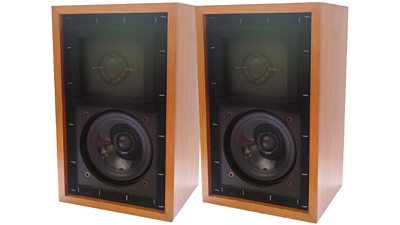
A typical ���˿��� Research Department Report from the 1980’s demonstrates the expertise and precision that has characterised the ���˿���’s engineering history, here looking at loudspeaker design.
Stereo TV: NICAM
Early radio and television had only one channel for sound, but the creative possibilities for stereo sound were obvious, especially once audiences were used to stereo records and film soundtracks. FM radio offered stereo for suitable receivers from 1961, but stereo sound for television was more technically challenging.
By the early 1980s a standard had emerged for recording television sound digitally. NICAM – it stands for ‘Near Instantaneous Companded Audio Multiplex’ – was first described in a 1972 ���˿��� Research Report and was quickly adopted in studios. ���˿��� engineers took the original specification and developed NICAM-728, a way of broadcasting digital two-channel sound with terrestrial television transmissions by adding two high-quality digitally-coded sound signals to the picture and mono FM sound signals of the existing system.
The first experimental NICAM broadcast was the first night of the 1986 Proms, although it did not formally launch until 1991 when transmitters had been upgraded and programmes were being produced in stereo. NICAM proved to be a major breakthrough and was adopted by many broadcasters around the world.
DVB-T2
A more recent example of broadcast innovation is DVB-T2, the enhanced second generation digital terrestrial broadcasting systems that supports HD (high definition) broadcasting. Developed in only three years by a consortium led by the ���˿��� and adopted in 2009, DVB-T2 made Freeview HD possible, massively improving the quality of images for UK audiences.
One important side-effect was that by making it easier to switch off the old analogue transmission systems as part of the UK’s ‘digital switchover’. DVB-T2 freed up broadcast spectrum for mobile phones, helping created today’s the connected world.
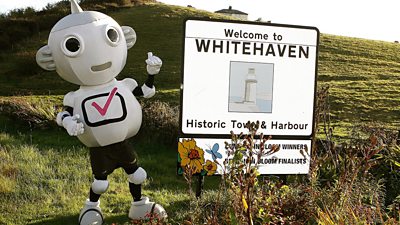
Near and Far: Outside Broadcasting
One area that required enormous technical innovation was broadcasting from outside the studio, initially for radio and then for television. One of the first live broadcasts was in May 1924, when cellist Beatrice Harrison famously played a duet with a nightingale in her garden in Surrey, and by 1928 the first OB truck had been built, with the equipment installed in the back of a converted van.

Television was more complex, both in terms of the need to move cameras and the extra work needed to get the signal back to the studio. The earliest attempt, in 1936, was a gardening programme filmed outside the ���˿��� television studio at Alexandra Palace, with the cameras attached by long studio cables. This was followed by the first genuine OB when images of the parade following the coronation of Coronation of King George VI and Queen Elizabeth were broadcast from Hyde Park Corner. This required a special cable, enclosed in a lead case- the first of many technical innovations that made outside broadcasting possible.
In this clip from Oral History Archive engineer Willy Cave discusses the outside broadcasting arrangements for the 1948 Olympics on radio and television, and the use of new cameras that had just become available.
There is a significant difference between a recorded or filmed event, as seen in newsreels or heard on the radio, and the live experience. For viewers in 1937 the ability to ‘watch’ the coronation parade at a distance marked a significant shift in our relationship to the world, and could be seen as a precursor of today’s screen-based immersion in our phones or the metaverse.
Broadcasting Standards Conversion
Some of the ���˿���’s technology innovations are intended to be invisible to audiences, and this is particularly the case with standards conversion, when a signal from one type of broadcasting system, like the US NTSC, is converted to another, like the European PAL. Ideally a viewer will not be able to tell that the images have been adapted.
The ���˿��� worked hard on this problem during the 1960s, and by 1967 had a system in place that could translate colour signals to the European standard adopted in the UK. The converter was used to provide colour coverage of the 1968 Olympic Games in Mexico and the ���˿��� received a Queen’s Award to Industry for it. It was used extensively in coverage the Apollo missions, including the first lunar landing in 1969. With the increasing use of digital technologies the complex analogue conversion hardware was replaced by newer systems. In 1998 the ���˿��� won another Queen’s Award for an advanced digital standards converter, which still forms the basis for systems used today for major live international sporting events.
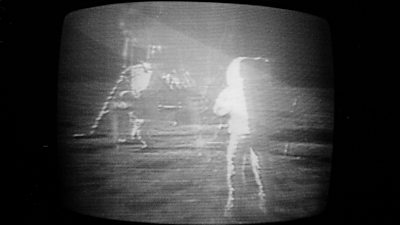
Beyond Broadcast
It’s important to reflect on the ���˿���’s impact beyond broadcasting, as the organisation has always tried to ensure that emerging technologies are used for public good. Four examples of this were CEEFAX, the ���˿��� Networking Club, the ���˿��� Microcomputer, and the ���˿��� micro:bit.
CEEFAX
Interactive services are commonplace today, but the first time they were widely used in the UK was 1974 when the ���˿��� launched the CEEFAX (a pun on ‘See facts’) teletext service that displayed text on the screen of a suitably equipped television, with the viewer typing in page numbers on a remote control to select from a constantly transmitted ‘carousel’ of pages.
���˿��� pages included news, sport, weather, travel and even jokes, while the commercial version Oracle on ITV also included advertising. This analogue service was discontinued in 2012, replace by the Red Button, but in many ways CEEFAX is the antecedent of the World Wide Web and today’s online services.
Networking Club
One of the ways the ���˿��� has shaped the modern world is by exploring new possibilities that commercial players may not be interested in. In 1994, as people were starting to take an interest in the internet but its commercial potential was uncertain ���˿��� Education launched the Networking Club, offering dialup internet access, the “Auntie” bulletin board, and information from ���˿��� programmes for £12 a month.
While it only ran until 1995, being closed to make way for the commercial beeb.com, the networking club was one of the signs that the internet was something to take seriously, and paved the way for today’s global adoption.
���˿��� Micro and micro:bit
The ���˿��� Microcomputer System was developed by Acorn Computers to a specification agreed with the ���˿��� and launched in 1982 to accompany the television series The Computer Programme. Part of ���˿��� Education’s wider Computer Literacy Project, the ���˿��� Micro, along with the Sinclair Spectrum and Commodore 64, marked a key moment in the availability of home computers and helped create a generation that was comfortable with them in their lives. As well as stimulating the UK computer games industry, it shaped the modern world of always-on devices.
This clip from the ���˿��� Computer Literacy Project Archive shows one of the first appearances of the Micro on television as Roy Kinnear and Chris Searle make fun of the confusion of names of computer brands at the time.
In 2016 the ���˿��� gave a computer to hundreds of thousands of year 7 school children across the UK, showing just how much technology has progressed. The ���˿��� micro:bit is a single-board computer that is designed to be open, flexible and programmable by young people, to encourage IT literacy and coding.
Towards tomorrow: Object Based Media
As the ���˿��� and other broadcasters move towards internet-first distribution new ways of telling stories emerge, and the ���˿��� is among those exploring the different ways to engage audiences. Within ���˿��� Research & Development work continues to create more interactive services, where the viewer can navigate their own path through a programme, or change the duration of a programme to match their schedule using object-based media.
Here ���˿��� R&D’s Emma Young and Matt Brooks explain object-based media in one of R&D’s public videos.
Public Service Augmented Reality (AR)
There is also a need to ensure that new technologies are shaped by public service concerns, and this is especially true with augmented and virtual reality, which are being developed by large commercial companies. The ���˿��� Public Service Augmented Reality project is developing a range of AR applications that reflect its approach to radio and television, making programmes that inform, educate and entertain, as Alex Nelson and Emma Young from ���˿��� R&D explain in this clip from another ‘R&D Explains’ video.
���˿��� Together
When it comes to sharing viewing experiences ���˿��� Together, which lets people set up iPlayer viewing parties so they can watch with friends across the country, is experimenting with ways to provide sharing recommendations while preserving user privacy. This is one of many examples of how the ���˿��� is considering the social impact of new technologies and trying to influence the ways they develop in ways that are not only shaped by commercial considerations but take account of the need to deliver the ���˿���’s wider public mission.
These innovations point to a world where we are informed, educated and entertained in a very different way from sitting around a radio or television set, where we can interact and engage with material through the network, and where we can have shared experiences.
We can’t tell how these new media formats will influence society and our culture, but there will always be a need to develop them in ways that align with the ���˿���’s public purposes and not solely for commercial reasons.
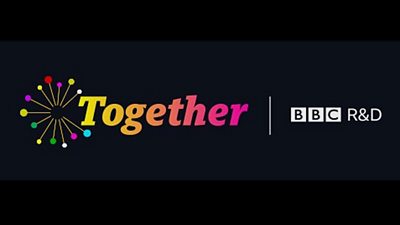
Conclusion
For a century the ���˿��� has built on the work of others, shared its innovations and inventions with the world, and collaborated to develop international standards that can be universally adopted, expressing its core Reithian values in the design and implementation of every sort of technology related to its mission.
It is this commitment to developing the public service ecosystem, first for sound, then for moving images, and latterly for online services, that really characterises the ���˿���’s relationship to technological innovation - and which continues in the work of today’s Research and Development department.
It has not always gone smoothly – in 2007 a plan to create a unified video streaming service for all UK public service broadcasters, Project Kangaroo, was halted by the Competition Commission, and iPlayer technology was never successfully shared in the way broadcasting innovations have been. And spending on research and development activity has also reduced in line with other ���˿��� expenditure as overall income has dropped, while there has been increasing pressure to justify the investment in R&D.
However innovation in technical standards continues to be at the heart of the ���˿���’s mission, with the impact often only felt years or decades afterwards. What comes across most clearly over the last century is that the work has been incremental and relied on partnerships, collaboration and a shared sense of public value.
Written by Bill Thompson, Technology commentator and Principal R&D Engineer at the ���˿���.

